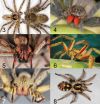(Press-News.org) CAMBRIDGE, Mass--Error-correcting codes are one of the glories of the information age: They're what guarantee the flawless transmission of digital information over the airwaves or through copper wire, even in the presence of the corrupting influences that engineers call "noise."
But classical error-correcting codes work best with large chunks of data: The bigger the chunk, the higher the rate at which it can be transmitted error-free. In the Internet age, however, distributed computing is becoming more and more common, with devices repeatedly exchanging small chunks of data over long periods of time.
So for the last 20 years, researchers have been investigating interactive-coding schemes, which address the problem of long sequences of short exchanges. Like classical error-correcting codes, interactive codes are evaluated according to three criteria: How much noise can they tolerate? What's the maximum transmission rate they afford? And how time-consuming are the encoding and decoding processes?
At the IEEE Symposium on Foundations of Computer Science this month, MIT graduate students past and present will describe the first interactive coding scheme to approach the optimum on all three measures.
"Previous to this work, it was known how to get two out of three of these things to be optimal," says Mohsen Ghaffari, a graduate student in electrical engineering and computer science and one of the paper's two co-authors. "This paper achieves all three of them."
Vicious noise
Moreover, where Claude Shannon's groundbreaking 1948 analysis of error-correcting codes considered the case of random noise, in which every bit of transmitted data has the same chance of being corrupted, Ghaffari and his collaborator — Bernhard Haeupler, who did his graduate work at MIT and is now an assistant professor at Carnegie Mellon University — consider the more stringent case of "adversarial noise," in which an antagonist is trying to interfere with transmission in the most disruptive way possible.
"We don't know what type of random noise will be the one that actually captures reality," Ghaffari explains. "If we knew the best one, we would just use that. But generally, we don't know. So you try to generate a coding that is as general as possible." A coding scheme that could thwart an active adversary would also thwart any type of random noise.
Error-correcting codes — both classical and interactive — work by adding some extra information to the message to be transmitted. They might, for instance, tack on some bits that describe arithmetic relationships between the message bits. Both the message bits and the extra bits are liable to corruption, so decoding a message — extracting the true sequence of message bits from the sequence that arrives at the receiver — is usually a process of iterating back and forth between the message bits and the extra bits, trying to iron out discrepancies.
In interactive communication, the maximum tolerable error rate is one-fourth: If the adversary can corrupt more than a quarter of the bits sent, perfectly reliable communication is impossible. Some prior interactive-coding schemes, Ghaffari explains, could handle that error rate without requiring too many extra bits. But the decoding process was prohibitively complex.
Making a list
To keep the complexity down, Ghaffari and Haeupler adopted a technique called list decoding. Rather than iterating back and forth between message bits and extra bits until the single most probable interpretation emerges, their algorithm iterates just long enough to create a list of likely candidates. At the end of their mutual computation, each of the interacting devices may have a list with hundreds of entries.
But each device, while it has only imperfect knowledge of the messages sent by the other, has perfect knowledge of the messages it sent. So if, at the computation's end, the devices simply exchange lists, each has enough additional information to zero in on the optimal decoding.
The maximum tolerable error rate for an interactive-coding scheme — one-fourth — is a theoretical result. The minimum length of an encoded message and the minimum decoding complexity, on the other hand, are surmises based on observation.
But Ghaffari and Haeupler's decoding algorithm is nearly linear, meaning that its execution time is roughly proportional to the length of the messages exchanged.
But linear relationships are still defined by constants: y = x is a linear relationship, but so is y = 1,000,000,000x. A linear algorithm that takes an extra second of computation for each additional bit of data it considers isn't as good as a linear algorithm that takes an extra microsecond.
INFORMATION:
Written by Larry Hardesty, MIT News Office
Contrary to the popular research-based assumption that the world's coral reefs are doomed, a new longitudinal study from UC Santa Barbara's National Center for Ecological Analysis and Synthesis (NCEAS) paints a brighter picture of how corals may fare in the future.
An NCEAS working group reports that there will be winners and losers among coral species facing increasing natural and human-caused stressors. However, its experts demonstrate that a subset of the present coral fauna will likely populate the world's oceans as water temperatures continue to rise. The findings ...
PITTSBURGH—The notion of "group selection"—that members of social species exhibit individual behavioral traits that render a population more or less fit for survival—has been bandied about in evolutionary biology since Darwin. The essence of the argument against the theory is that it's a "fuzzy" concept without the precision of gene-based selection.
Jonathan Pruitt, assistant professor of behavioral ecology in the University of Pittsburgh's Department of Biological Sciences within the Kenneth P. Dietrich School of Arts and Sciences, has published a paper today in the ...
Spiders found in international cargo brought into North America are sometimes submitted to arachnologists for identification. Often, these spiders are presumed to be of medical importance because of their size or similarity to spiders that are known to be venomous.
In 2006, after witnessing multiple episodes where harmless spiders were mistaken for toxic ones, Dr. Richard Vetter, an arachnologist at the University of California, asked other arachnologists to provide data on specimens they found in international cargo that had been submitted to them for identification. ...
New insights into botulinum neurotoxins and their interactions with cells are moving scientists ever closer to safer forms of Botox and a better understanding of the dangerous disease known as botulism. By comparing all known structures of botulinum neurotoxins, researchers writing in the Cell Press journal Trends in Biochemical Sciences on October 1st suggest new ways to improve the safety and efficacy of Botox injections.
"If we know from high-resolution structures how botulinum neurotoxins interact with their receptors, we can design inhibitors or specific antibodies ...
WASHINGTON— The Society for Public Health Education (SOPHE) proudly announces the publication of a Health Education & Behavior (HE&B) supplement devoted to the latest research and practice to promote healthy aging. The October 2014 supplement, "Fostering Engagement and Independence: Opportunities and Challenges for an Aging Society," contains a dozen peer-reviewed articles on innovative behavioral and psycho-social approaches to improve the health of the nation's fastest growing cohort - older adults.
Together the articles describe promising advances in research directed ...
BEIJING; BERKELEY, CA; and UPTON, NY - The Daya Bay Collaboration, an international group of scientists studying the subtle transformations of subatomic particles called neutrinos, is publishing its first results on the search for a so-called sterile neutrino, a possible new type of neutrino beyond the three known neutrino "flavors," or types. The existence of this elusive particle, if proven, would have a profound impact on our understanding of the universe, and could impact the design of future neutrino experiments. The new results, appearing in the journal Physical Review ...
CUMBERLAND, MD (October 1, 2014)--When scientists talk about the consequences of climate change, it can mean more than how we human beings will be impacted by higher temperatures, rising seas and serious storms. Plants and trees are also feeling the change, but they can't move out of the way. Researchers at the University of Maryland Center for Environmental Science and University of Vermont have developed a new tool to overcome a major challenge of predicting how organisms may respond to climate change.
"When climate changes, organisms have three choices: migrate, adapt, ...
BUFFALO, N.Y. — If a person is dually diagnosed with a severe mental illness and a substance abuse problem, are improvements in their mental health or in their substance abuse most likely to reduce the risk of future violence?
Although some may believe that improving symptoms of mental illness is more likely to lessen the risk for future episodes of violence, a new study from the University at Buffalo Research Institute on Addictions (RIA) suggests that reducing substance abuse has a greater influence in reducing violent acts by patients with severe mental illness. ...
New Rochelle, NY, October 1, 2014—Regulation of the human immune system's response to infection involves an elaborate network of complex signaling pathways that turn on and off multiple genes. The emerging importance of long noncoding RNAs and their ability to promote, fine-tune, and restrain the body's inflammatory response by regulating gene expression is described in a Review article in Journal of Interferon & Cytokine Research (JICR), a peer-reviewed publication from Mary Ann Liebert, Inc., publishers. The article is available free on the JICR website.
In the Review ...
COLUMBIA, Mo. – Relational aggression, or "mean girl" bullying, is a popular subject in news and entertainment media. This nonphysical form of aggression generally used among adolescent girls includes gossiping, rumor spreading, exclusion and rejection. As media coverage has illustrated, relational aggression can lead to tragic and sometimes fatal outcomes. Despite these alarming concerns, little has been done to prevent and eliminate these negative behaviors. Now, University of Missouri researchers have developed and tested an intervention that effectively decreases relational ...




